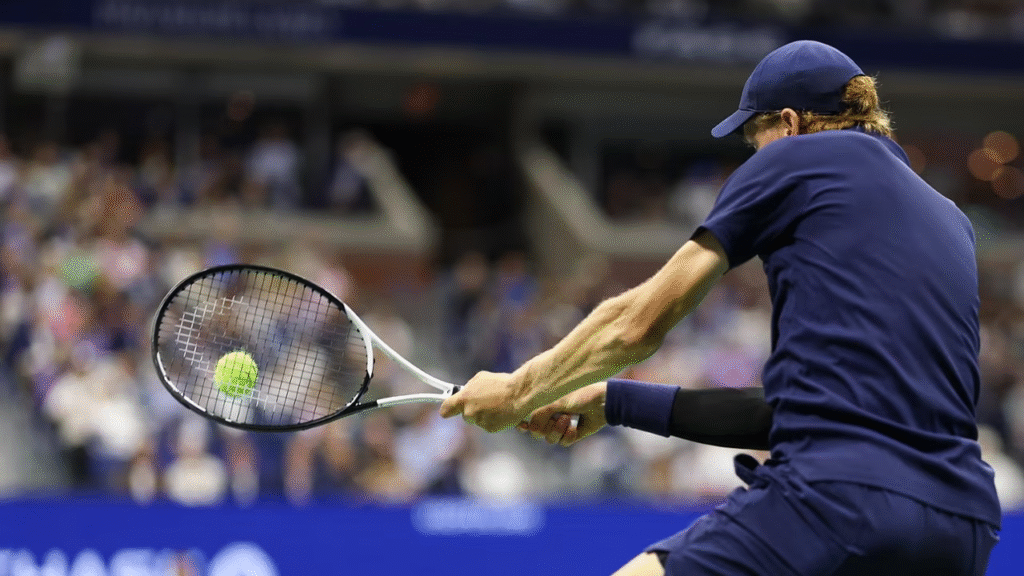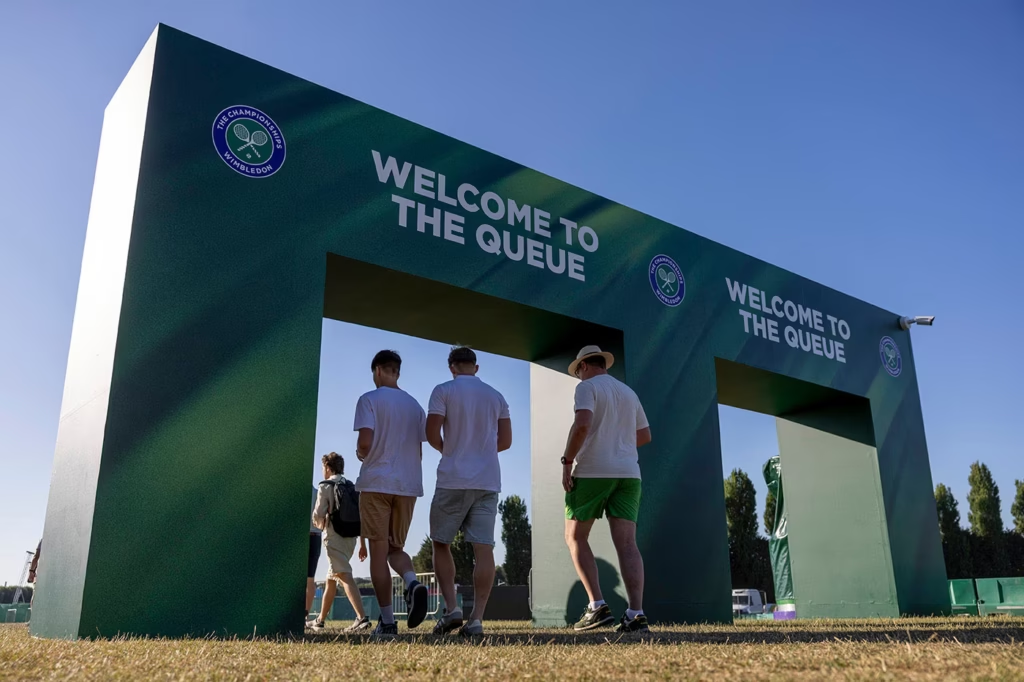In the weeks leading up to the US Open, one storyline dominated the men’s tour. Once again, the possibility of a Carlos Alcaraz versus Jannik Sinner final was at the centre of discussion. By the time the two walked into Arthur Ashe Stadium, it felt less like a surprise and more like a confirmation of a new order. For the third Grand Slam in a row, it was these two players carrying the sport’s heaviest stage. The men’s game, long defined by generational dominance, had found its latest pair of rulers.
What separates Alcaraz and Sinner from other emerging stars is not just their talent, but the inevitability with which they now collide. No other pairing in the Open Era has reached three straight Slam finals together, and the impression is of two careers locked in orbit, each defining the other. For Alcaraz, the Spaniard who plays with a blend of audacity and improvisation rarely seen since a young Nadal, the rivalry has been a proving ground. For Sinner, the cool, disciplined Italian whose consistency has become his calling card, it has been a constant test of his composure and ambition.
Alcaraz, just 22, already holds five major titles. He has lifted trophies on every surface, each one marked by the flair and athleticism that has made him a natural star. His five-set comeback win at Roland Garros in 2025, where he saved multiple championship points against Sinner in a final that stretched beyond five hours, has already been described as one of the greatest matches in French Open history. For Sinner, 23, his triumph at Wimbledon the same summer, where he became the first Italian man ever to win the championship, was the coronation he had been chasing since breaking into the top ten as a teenager. Their numbers run almost parallel: Sinner with four majors, including back-to-back Australian Opens, Alcaraz with one more but by the narrowest of margins. Their head-to-head is close, Alcaraz leading 9–5, but every time they meet, the balance feels as though it could tilt the other way.

The contrast in style has only sharpened the sense of inevitability in their clashes. Alcaraz thrives on chaos, injecting matches with sudden drop shots, daring winners, and the ability to switch from defence to attack in a blink. His tennis feels like theatre, a performance as much as a contest. Sinner, in contrast, is clinical, built on the repetition of perfectly timed groundstrokes, his power controlled rather than explosive, his movement efficient rather than spectacular. When they share a court, the match becomes a conversation between control and improvisation, rhythm and disruption.
What is striking is not only their dominance, but how quickly it has materialised. Between them, they have won nine of the last ten majors. In the ATP Masters events, their presence has been similarly commanding, often meeting deep in the draws and shaping the path of tournaments before the finals are even reached. Other players of their generation; Holger Rune, Lorenzo Musetti, Felix Auger-Aliassime, have found it difficult to break through. Even established stars like Daniil Medvedev and Alexander Zverev, once tipped to inherit the mantle of the Big Three, now look like supporting characters. There is an ongoing debate in tennis circles about whether this duopoly is a healthy development for the sport. On one hand, the consistency of marquee finals ensures a global spotlight. Every Alcaraz-Sinner match feels like a guarantee of quality, of rallies that bend the imagination and matches that stretch into epics. On the other hand, the sense of inevitability threatens to narrow the field, making it harder for other talents to emerge with the same visibility or opportunity to build rivalries of their own.
It is impossible not to draw comparisons with Federer and Nadal. Both pairings have been defined by contrast: left-handed flair against all-court precision then, chaotic shot-making against baseline metronomy now. Both rivalries have been elevated by mutual respect. In their post-match press conferences, Alcaraz and Sinner often speak of each other with a disarming generosity. Alcaraz has noted more than once that Sinner forces him to find “solutions I didn’t know I had,” while Sinner has called Alcaraz “the most complete player in the sport right now.” These are not throwaway platitudes, but evidence of a rivalry where respect is not a performance, but a necessity. They know that the level they are reaching would be impossible without the other pushing them there.
Yet there are differences, too. Where Federer and Nadal’s rivalry was often framed as a cultural clash, Switzerland’s elegance against Spain’s grit , Alcaraz and Sinner belong to a generation that views competition through a more collaborative lens. They do not project animosity. There are no icy handshakes or simmering feuds. Instead, their rivalry feels modern, almost professionalised, as if they understand that together they carry not just their own ambitions but the momentum of the entire sport.
For the rest of the field, this reality is both a challenge and an opportunity. Novak Djokovic’s twilight years still included Slam wins, but with his retirement, the floor opened. The expectation was that the field would widen. Instead, Alcaraz and Sinner have narrowed it again. That leaves younger players like Arthur Fils or Ben Shelton in a difficult position: either they break through in spectacular fashion, or they risk being overshadowed for years. Some argue this concentration of power is bad for the ATP Tour, flattening storylines and reducing unpredictability. Others believe that rivalries of this magnitude elevate the sport as a whole, creating a narrative focus that draws in casual fans who might not tune in for more fragmented outcomes.
There is also the question of longevity. Both Alcaraz and Sinner are still in their early twenties, with room to refine their games. Alcaraz continues to improve his serve and rein in his occasional lapses in shot selection, while Sinner is learning to expand his variety and manage his physicality across long tournaments. If they are this good already, the ceiling remains frighteningly high. The Big Three era stretched for nearly two decades; if Sinner and Alcaraz remain healthy, there is every chance their rivalry could define the next one.

But dominance has consequences. Fans of players outside the rivalry can feel alienated when finals become predictable. For the ATP, the challenge will be to promote not just the headline act, but the supporting cast, ensuring the tour remains competitive in perception if not always in results. The silver lining is that Alcaraz and Sinner’s matches are rarely routine. Even when the outcome is predictable, the path to it is not. Their meetings are filled with marathon rallies, sudden momentum swings, and the kind of athletic feats that fuel highlight reels for weeks.
When you step back and consider the trajectory of their careers so far, the sense of inevitability becomes almost surreal. Alcaraz’s first Slam came at 19, Sinner’s at 22, and already they are rewriting record books. They have contested finals on all three surfaces, trading blows in Paris, London, and New York. They have played matches that stretched beyond five hours, producing the kind of epics that once seemed exclusive to the Big Three. They have lifted trophies in front of crowds that no longer wonder whether tennis has a future, but marvel at how quickly that future has arrived.

The rivalry between Carlos Alcaraz and Jannik Sinner is not just a matter of who wins more titles. It is about style, personality, and the way two careers can become interwoven into a single narrative. For tennis, it is a reminder that renewal is possible, that after every golden age comes another, different in tone but equal in significance. The comparison to Federer and Nadal will remain for years, but perhaps the more important measure is how their presence reshapes the landscape for everyone else. In a sport that thrives on stories, this one is already unavoidable, and it has only just begun. That reality was underlined just minutes ago in New York, where Alcaraz defeated Sinner in four sets to win his third U.S. Open title. The match carried all the hallmarks of their rivalry: long, bruising rallies, sudden swings of momentum, and moments of brilliance from both sides of the net. Alcaraz’s drop shots and explosive forehands once again clashed with Sinner’s relentless precision, creating a spectacle that drew the crowd to its feet time and again. Even in defeat, Sinner looked every bit a champion, his composure and resilience further proof that this is not a rivalry of peaks and valleys but of sustained excellence. For the rest of the men’s field, the message could not be clearer; the path to the biggest prizes will run through these two for years to come.


